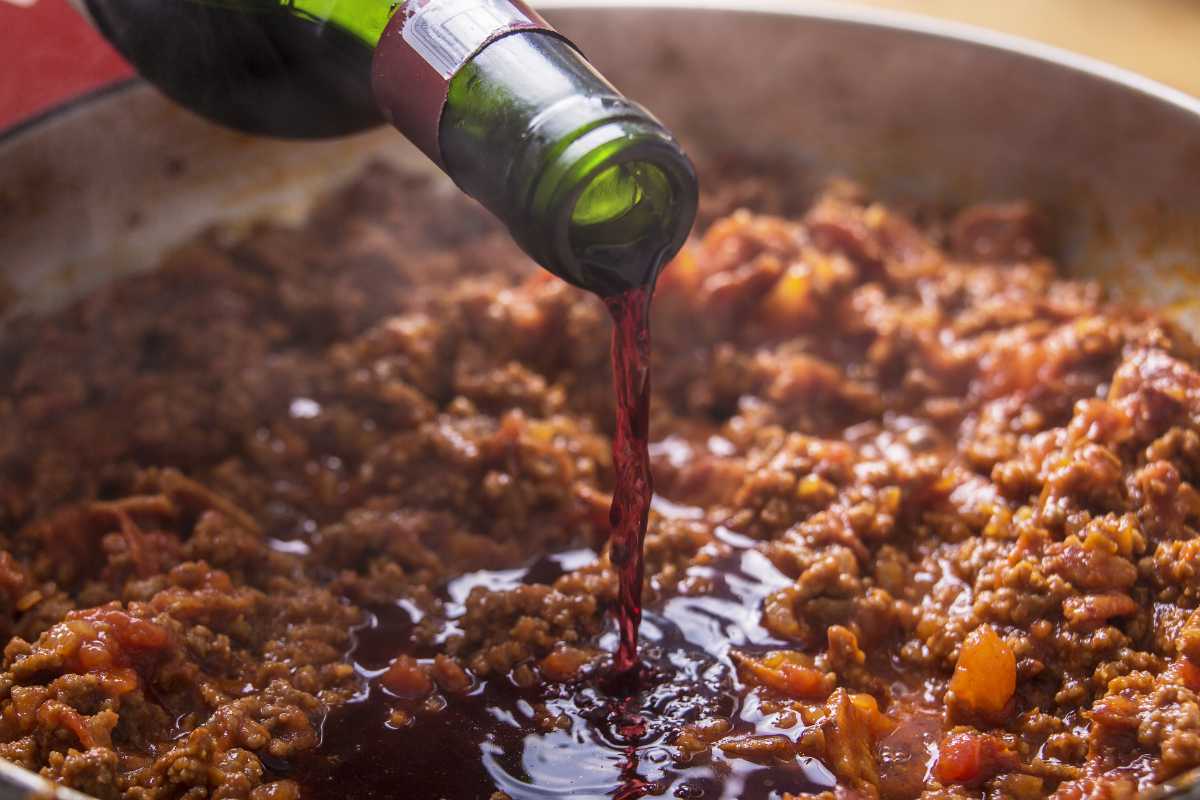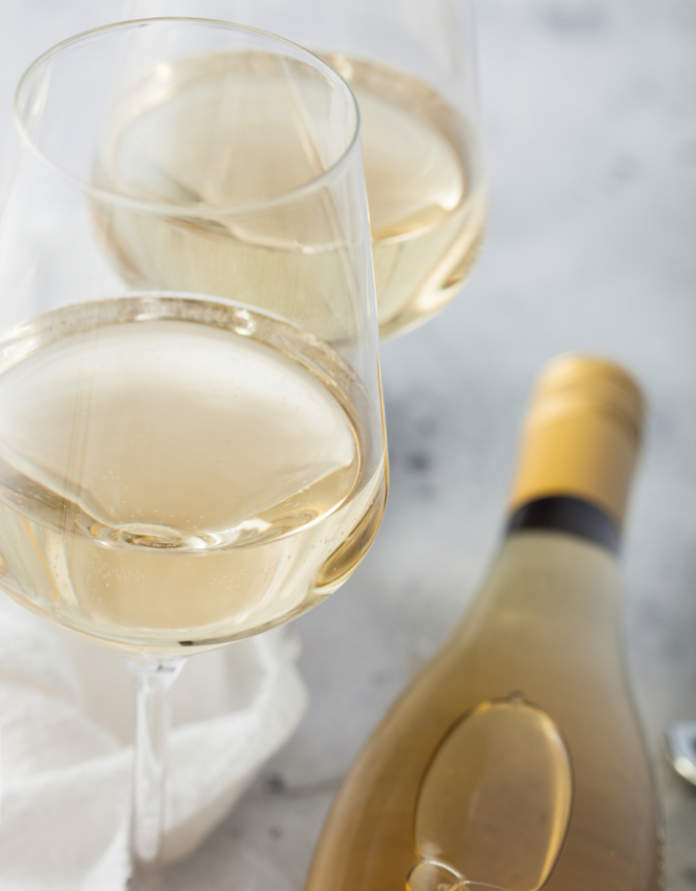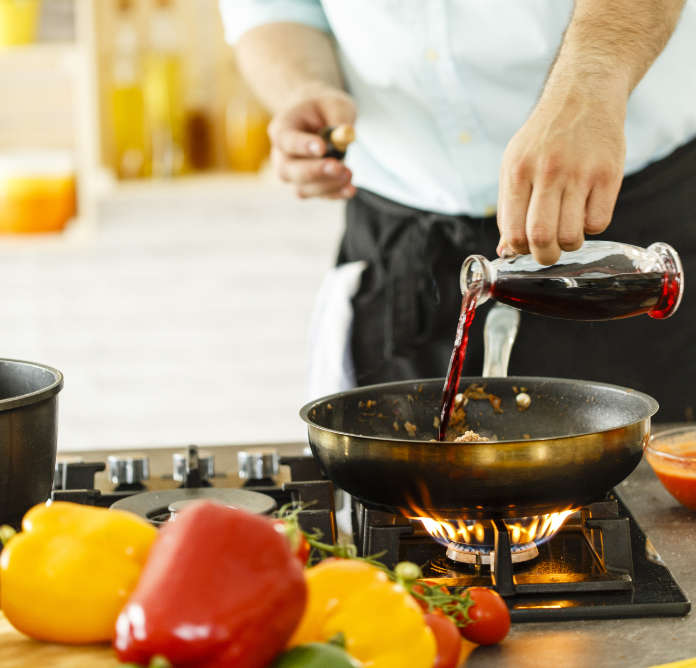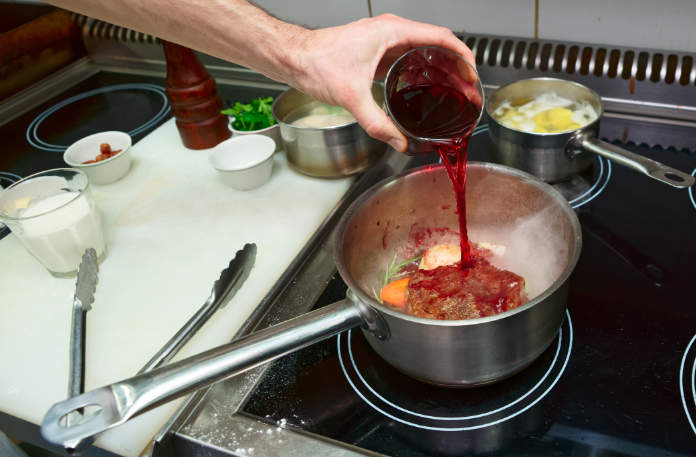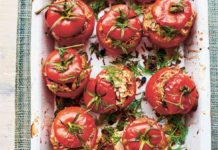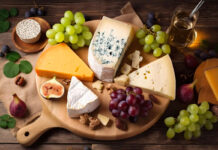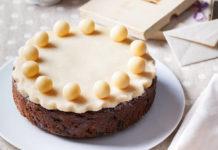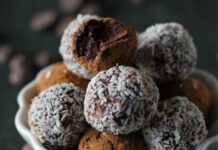Wine pairs beautifully with food, and for some of us, cooking with wine is just as natural as pouring that first glass to celebrate the end of a long, hard week. But knowing which wine to add to your dishes can be hard. Is that dusty looking red worth splashing into your beef bourguignon or can you pour a cheap tasting white into a creamy white wine sauce?
How to choose the best white and red wines to cook with
Here are some simple guidelines so you know what to add to the pot…
1. Don’t cook with a wine you wouldn’t drink
No matter how tempting, never pour a wine into a stew that you wouldn’t happily glug by the glass. The tainted, bitter taste or faint trace of vinegar will coat the food and wipe out all those delicious flavours.
2. Never cook with cooking sherry or cooking wine
Everyone should have a bottle of sherry on the side, but not the stuff labelled ‘cooking sherry or cooking wine,’ which tastes filthy and is high in salt. A dry fino sherry (always keep it in the fridge) works like a dream in savoury sauces and gravy, while a richer, nutty sherry, such as an oloroso, can transform roasted or braised meats.
3. Rely on sauvignon blanc
The most versatile style of white (and one you can enjoy with the meal, too) is a good quality sauvignon blanc from New Zealand or France – it will give the recipe a fresh, herbal lift. Or a crisp, citrus-edged, easy drinking Italian.
4. With red wine, try to match the weight of the dish with the weight of the wine
If you’re cooking a hearty casserole, a rustic red from south west France such as a Madiran with its ripe plum, spice and cassis flavours will do the trick. Or lob some Australian shiraz into your chilli con carne.
5. It’s easy to finish off a bottle of port in glazes and sauces
The festive cheese board may be a distant memory, but don’t pass on the port if you still have a bottle of tawny sitting on the side. Because it’s fortified and contains slightly more alcohol, the lush taste of caramel, nuts and dried fruit can be an added bonus in glazes, meaty sauces – especially beef in port sauce.
6. Remember, the alcohol will burn off
When you cook with wine, the alcohol in the liquid starts to evaporate (at three times the rate of water) and the longer something is cooked, the less alcohol remains.
So if you simmer something for about 15 minutes, research suggests 40% of the alcohol remains, while if you cook something for two and a half hours, just 5% will be present. Considering the average bottle of wine is 12-15% abv, the final flourish can be quite forgiving.
Read more: How to read a French wine label























































